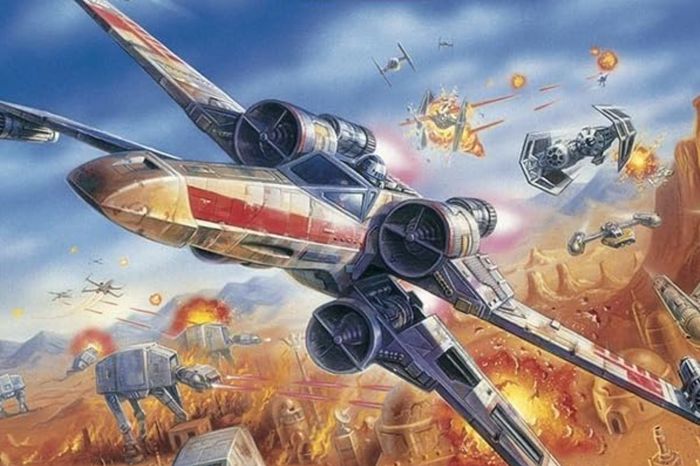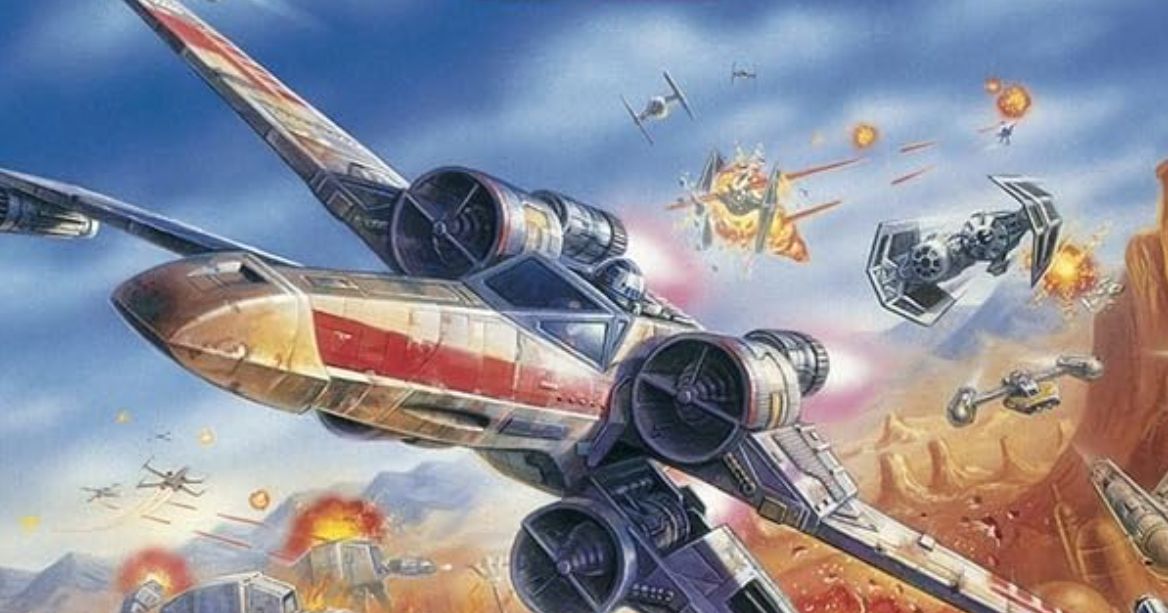
Photo: Factor 5, LucasArts
The oft-repeated story of Star Wars: Rogue Squadron’s inception is that it was inspired by the first level of 1996’s Shadows of the Empire, in which players take control of a snow speeder during The Empire Strikes Back’s Battle of Hoth. In reality, developer Factor 5 had been pitching the game for years. Not as a Star Wars game, but as a sequel to LucasArts’ (now Lucasfilm Games) Rescue on Fractalus!
With the Nintendo 64 on its way, the team stepped up its efforts. “Of course, LucasArts comes out with Shadows of the Empire,” Julian Eggebrecht, co-founder of Factor 5 and project lead on Rogue Squadron, tells me. “What we wanted to do with Rogue Squadron, what became Rogue Squadron, was much more sophisticated than that.”
The result was a game built around short, sharp missions designed to be optimized through repetitive play. Something amplified by a multilayered progression system that saw the player presented with medals for completing levels to a certain standard, which in turn influenced ranks and led to unlockable rewards.
Now 25 years old, Rogue Squadron still stands up as a game that revels in its players’ obsession. As a child in 1999, I spent months carefully teasing the variables to hone my performance and truly complete the game. In a year replete with remarkable games, it was Rogue Squadron that kept me the most engaged. “It definitely has this addictiveness,” Eggebrecht says. “And we were going for that! We were going for that brutality!”
To get there, however, took an equally brutal development cycle — the majority of which was devoted to learning to fly. “Everyone assumed Shadows of the Empire figured it out — not at all,” Eggebrecht says. He and LucasArts project lead Mark Haigh-Hutchinson agreed flight in Rogue Squadron needed to be simpler and more accessible.
Haigh-Hutchinson, who passed away in 2008, took on the task himself, having previously developed the controls and camera for Shadows of the Empire’s snow speeder. “Mark almost lost his mind over it, because it was hard — it was really, really hard,” Eggebrecht says. “He took a full year of working just on the frickin’ X-wing!”
That development was made precipitously more difficult by the Nintendo 64’s primitive infrastructure. With its limited hardware, every N64 game feels like a technical marvel in hindsight. Rogue Squadron, however, pushed the console to its limit. Eggebrecht chuckles when I ask him about this. “The N64 (a) was a devilish machine and (b) the development environment was absolutely horrible,” he tells me.
It was so bad that Factor 5, with the help of two British hardware developers, created their own development environment for the console. “It was basically ten times, if not a hundred times, faster in terms of turnaround times for Rogue Squadron.”
Not content with just that, and with Nintendo’s blessing, the team rewrote the N64’s sound system to facilitate the remarkable soundtrack composed by Chris Huelsbeck. “I think he never got remotely enough credit for that,” Eggebrecht says of music so innately integrated with the Star Wars identity while being so individual to Rogue Squadron.
To that LucasArts added a voice cast including Bob Bergen, Olivia Hussey, and Terry McGovern. “That was a fluke. We got lucky because George Lucas didn’t like LucasArts,” McGovern tells me over Zoom. “Every once in a while they’d grab one of us and give us some work.”
“That’s why we invested the time in coming up with that voice compression for the N64,” Eggebrecht adds. “LucasArts’ voice department was, in the industry, by far the best out there.”
By the time E3 rolled around in May 1998, however, Rogue Squadron consisted of one level without objectives, Eggebrecht tells me. “We had an AT-AT basically walking along, you weren’t even able to take it down, and you could shoot down a few Tie-Fighters.”
The development of Rogue Squadron was rough, yet the magic conjured therein endures — helped by the fact Rogue Squadron remains available to modern players on Steam. To pull Rogue Squadron out of the limited hardware of the N64 is a testament to Factor 5 and LucasArts, but it’s also a reminder of the hazy, heady world of the Nintendo 64 that few remember as anything but magical. Even if, as Eggebrecht suggests, “sometimes it’s magic which you cannot re-create.”
He is optimistic we may see its like again, though. Of all games, the spark for that optimism is Super Mario Wonder. “Part of the trick that Wonder does so well is this extremely well-paced brief gameplay,” he says, “which is also very much arcade-y; it’s only so long. Wonder reminds me of Rogue Squadron.”
Even 25 years later, we can still find shades of Rogue Squadron hidden in the unlikeliest of places. Despite the rose-tinted nature of hindsight, Rogue Squadron truly was a marvel — lovingly developed and unmistakably revolutionary. I feel oddly privileged to have had the chance to play it for the first time, untainted by everything since, even as my bones molder at the thought of 25 years passing since its release; to know I was there for something special — to me at least. As McGovern says as he looks back to that time himself, “I was — we were — we were all at the right place at the right time.”
